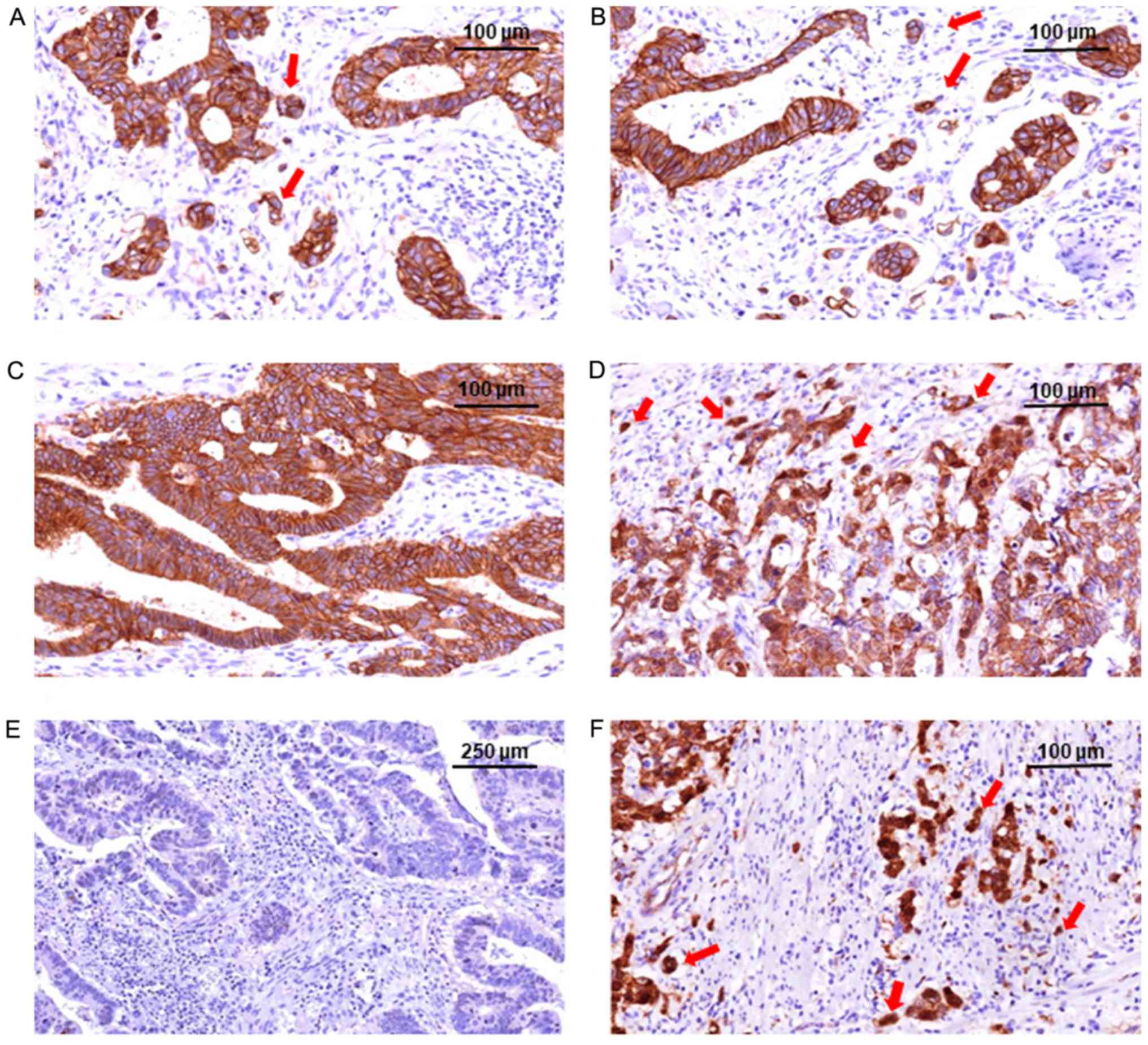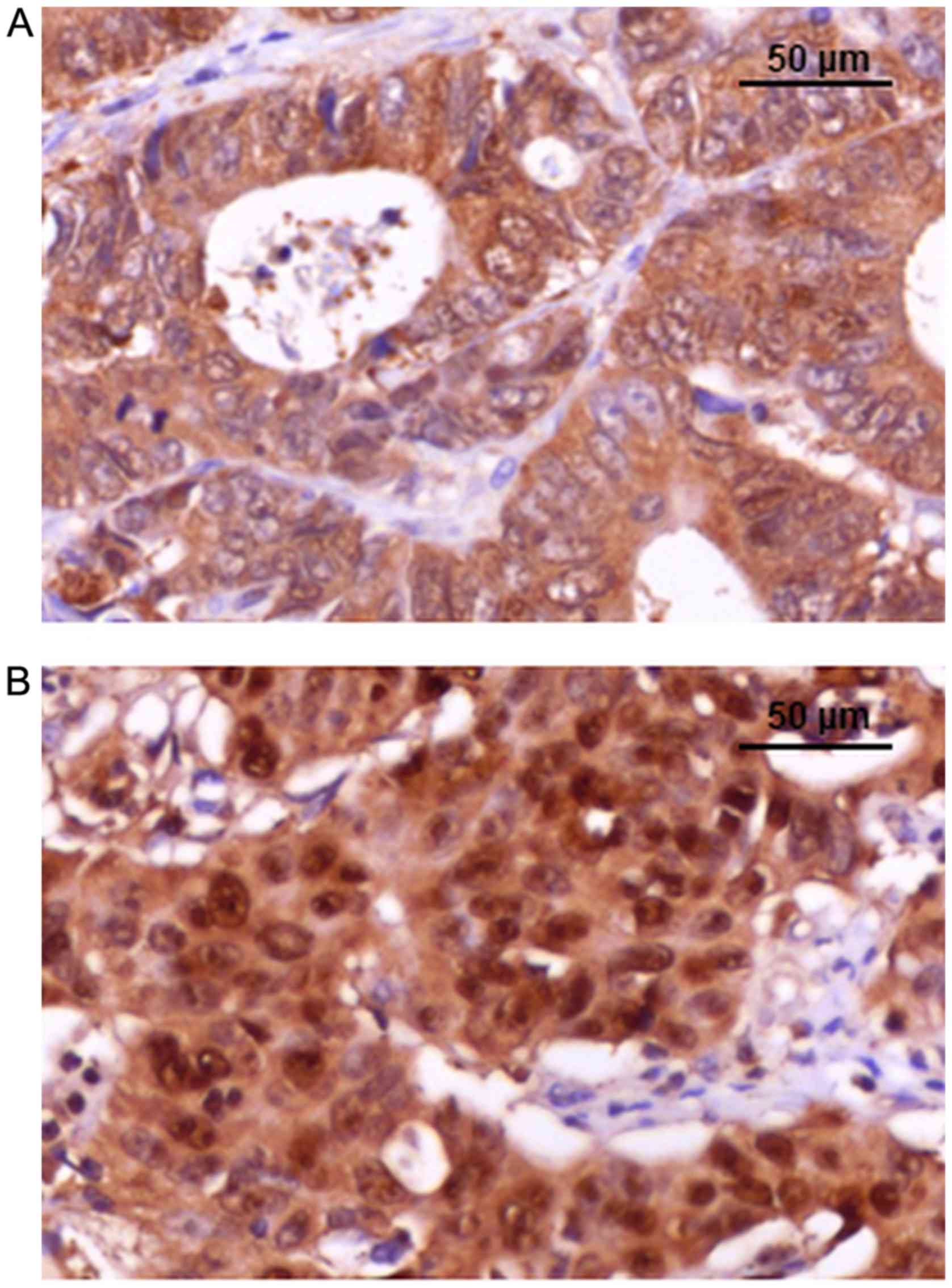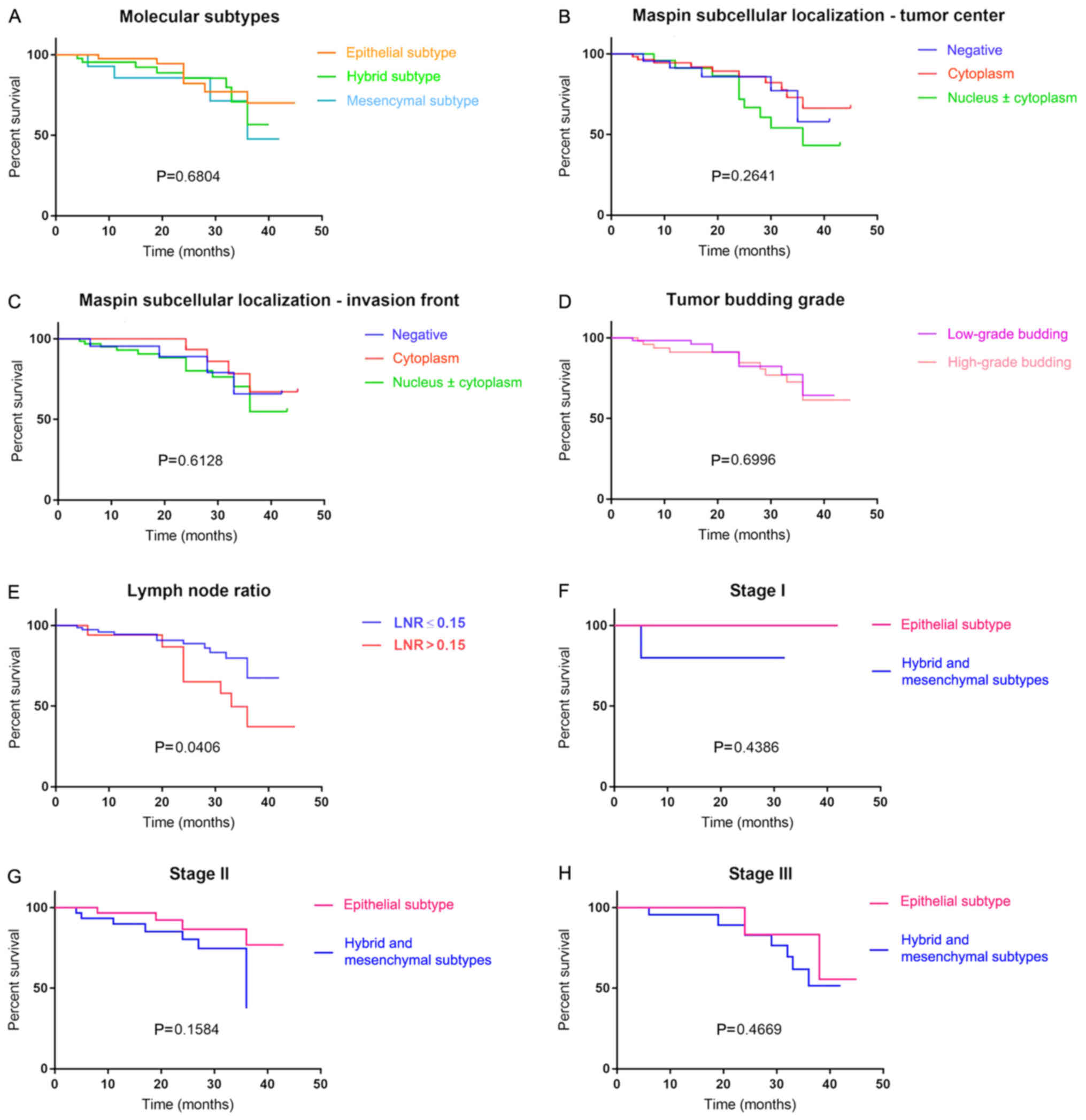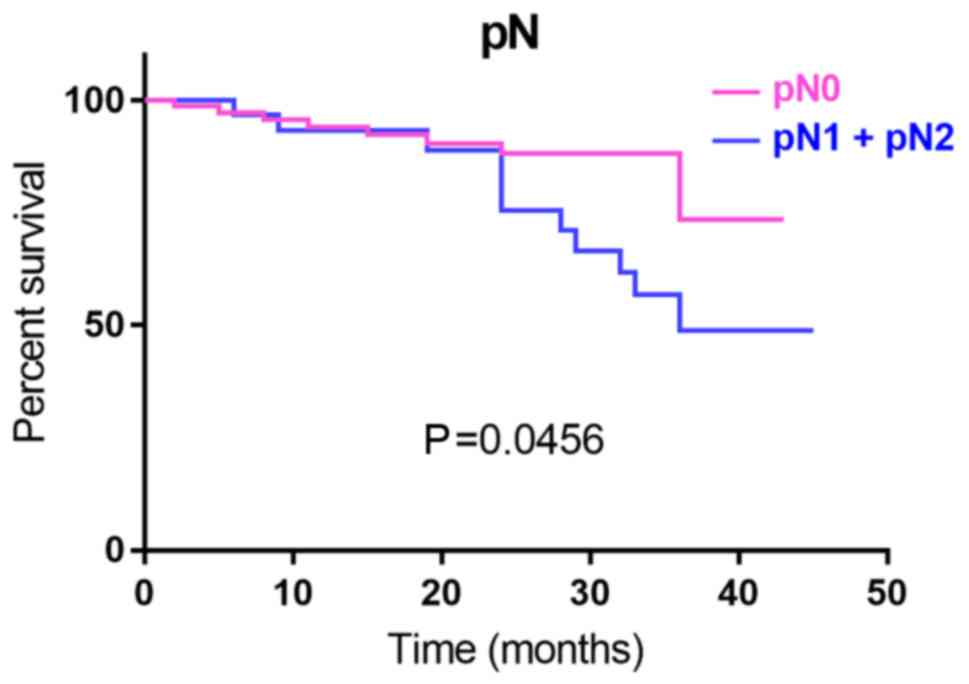|
1
|
Guinney J, Dienstmann R, Wang X, de
Reyniès A, Schlicker A, Soneson C, Marisa L, Roepman P, Nyamundanda
G, Angelino P, et al: The consensus molecular subtypes of
colorectal cancer. Nat Med. 21:1350–1356. 2015. View Article : Google Scholar : PubMed/NCBI
|
|
2
|
Gurzu S, Silveanu C, Fetyko A, Butiurca V,
Kovacs Z and Jung I: Systematic review of the old and new concepts
in the epithelial-mesenchymal transition of colorectal cancer.
World J Gastroenterol. 22:6764–6775. 2016. View Article : Google Scholar : PubMed/NCBI
|
|
3
|
Cao H, Xu E, Liu H, Wan L and Lai M:
Epithelial-mesenchymal transition in colorectal cancer metastasis:
A system review. Pathol Res Pract. 211:557–569. 2015. View Article : Google Scholar : PubMed/NCBI
|
|
4
|
Roseweir AK, Kong CY, Park JH, Bennett L,
Powell AGMT, Quinn J, van Wyk HC, Horgan PG, McMillan DC, Edwards J
and Roxburgh CS: A novel tumor-based epithelial-to-mesenchymal
transition score that associates with prognosis and metastasis in
patients with Stage II/III colorectal cancer. Int J Cancer.
144:150–159. 2019. View Article : Google Scholar : PubMed/NCBI
|
|
5
|
Gurzu S, Banias L, Kovacs Z and Jung I:
Epithelial-mesenchymal transition of tumor budding in colorectal
cancer: The mystery of CD44-positive stromal cells. Hum Pathol.
71:168–169. 2018. View Article : Google Scholar : PubMed/NCBI
|
|
6
|
Lugli A, Kirsch R, Ajioka Y, Bosman F,
Cathomas G, Dawson H, El Zimaity H, Flejou JF, Hansen TP, Hartmann
A, et al: Recommendations for reporting tumor budding in colorectal
cancer based on the international tumor budding consensus
conference (ITBCC) 2016. Mod Pathol. 30:1299–1311. 2017. View Article : Google Scholar : PubMed/NCBI
|
|
7
|
Ueno H, Ishiguro M, Nakatani E, Ishikawa
T, Uetake H, Matsuda C, Nakamoto Y, Kotake M, Kurachi K, Egawa T,
et al: Prospective multicenter study on the prognostic and
predictive impact of tumor budding in stage II colon cancer:
Results from the SACURA trial. J Clin Oncol. 37:1886–1894. 2019.
View Article : Google Scholar : PubMed/NCBI
|
|
8
|
Banias L, Gurzu S, Kovacs Z, Bara T, Bara
T Jr and Jung I: Nuclear maspin expression: A biomarker for budding
assessment in colorectal cancer specimens. Pathol Res Pract.
213:1227–1230. 2017. View Article : Google Scholar : PubMed/NCBI
|
|
9
|
Banias L, Jung I and Gurzu S: Subcellular
expression of maspin- from normal tissue to tumor cells. World J
Meta-Anal. 7:142–155. 2019. View Article : Google Scholar
|
|
10
|
Gurzu S, Szentirmay Z, Popa D and Jung I:
Practical value of the new system for Maspin assessment, in
colorectal cancer. Neoplasma. 60:373–383. 2013. View Article : Google Scholar : PubMed/NCBI
|
|
11
|
Gurzu S, Szentirmay Z and Jung I:
Molecular classification of colorectal cancer: A dream that can
become a reality. Rom J Morphol Embryol. 54:241–245.
2013.PubMed/NCBI
|
|
12
|
Gurzu S, Szentrimay Z, Toth E and Jung I:
Possible predictive value of maspin expression in colorectal
cancer. Recent Pat Anticancer Drug Discov. 8:183–190. 2013.
View Article : Google Scholar : PubMed/NCBI
|
|
13
|
Amin MB, Edge S, Greene F, Byrd DR,
Brookland RK, Washington MK, Gershenwald JE, Compton CC, Hess KR,
Sullivan DC, et al: AJCC cancer staging manual. Springer.
2017:251–274. 2017.
|
|
14
|
Fulop ZZ, Gurzu S, Bara T, Dragus E, Bara
T Jr, Voidazan S, Banias L and Jung I: Lymph node ratio, an
independent prognostic factor for patients with stage II–III rectal
carcinoma. Pathol Res Pract. 215:1523842019. View Article : Google Scholar : PubMed/NCBI
|
|
15
|
Luchini C, Bibeau F, Lightenberg MJL,
Singh N, Nottegar A, Bosse T, Miller R, Riaz N, Douillard JY, Andre
F and Scarpa A: ESMO recommendations on microsatellite instability
testing for immunotherapy in cancer, and its relationship with
PD-1/PD-L1 expression and tumour mutational burden; A systematic
review-based approach. Ann Oncol. 2019.(Epub ahead of print).
View Article : Google Scholar : PubMed/NCBI
|
|
16
|
Kim WG, Kim JY and Park DY: Simple
classifiers for molecular subtypes of colorectal cancer. Arab J
Gastroenterol. 18:191–200. 2017. View Article : Google Scholar : PubMed/NCBI
|
|
17
|
Ten Hoorn S, Trinh A, de Jong J, Koens L
and Vermeulen L: Classification of colorectal cancer in molecular
subtypes by immunohistochemistry. Methods Mol Biol. 1765:179–191.
2018. View Article : Google Scholar : PubMed/NCBI
|
|
18
|
Lee CHA, Wilkins S, Oliva K, Staples MP
and McMurrick PJ: Role of lymph node yield and lymph node ratio in
predicting outcomes in non-metastatic colorectal cancer. BJS Open.
3:95–105. 2018. View
Article : Google Scholar : PubMed/NCBI
|
|
19
|
Attaallah W, Gunal O, Manukyan M, Ozden G
and Yegen C: Prognostic impact of the metastatic lymph node ratio
on survival in rectal cancer. Ann Coloproctol. 29:100–105. 2013.
View Article : Google Scholar : PubMed/NCBI
|
|
20
|
Kim JH, Cho NY, Bae JM, Kim KJ, Rhee YY,
Lee HS and Kang GH: Nuclear maspin expression correlates with the
CpG island methylator phenotype and tumor aggressiveness in
colorectal cancer. Int J Clin Exp Pathol. 8:1920–1928.
2015.PubMed/NCBI
|
|
21
|
Yamadera M, Shinto E, Kajiwara Y,
Mochizuki S, Okamoto K, Shimazaki H, Hase K and Ueno H:
Differential clinical impacts of tumour budding evaluated by the
use of immunohistochemical and haematoxylin and eosin staining in
stage II colorectal cancer. Histopathology. 74:1005–1013. 2019.
View Article : Google Scholar : PubMed/NCBI
|
|
22
|
Hestetun KE, Brydøy M, Myklebust MP and
Dahl O: Nuclear maspin expression as a predictive marker for
fluorouracil treatment response in colon cancer. Acta Oncol.
54:470–479. 2015. View Article : Google Scholar : PubMed/NCBI
|
|
23
|
Santamaria PG, Moreno-Bueno G, Portillo F
and Cano A: EMT: Present and future in clinical oncology. Mol
Oncol. 11:718–738. 2017. View Article : Google Scholar : PubMed/NCBI
|



















